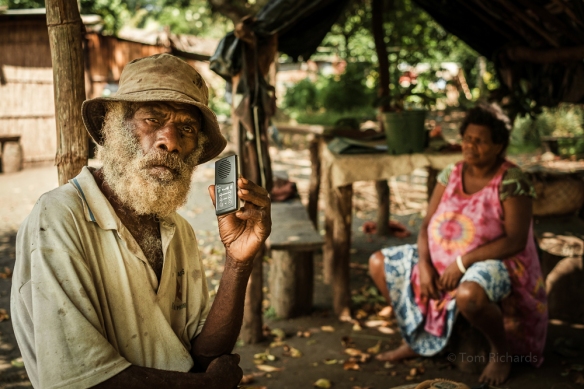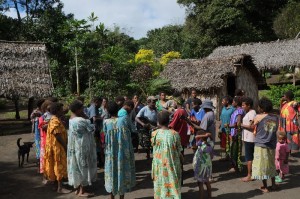
Tanna man using a MegaVoice, a solar-powered audio device loaded with a vernacular New Testament – one way in which someone might ‘receive’ or take in the Bible.
Interaction with Don’t Throw the Book at Them by Harry Box, Chapter 3
If you want to get the main idea and avoid the detail, jump to ‘The Written Elephant in the Oral Room’ (Click ‘read more’ and then scroll down ).
I should say right from the outset that if there is one chapter in this book that I am inclined to disagree with, it is this one. It’s a great book and no doubt beneficial for learning to better communicate with oral people, but perhaps the case gets overstated here. The chapter is worth reading, and in fact, I think when we think through the way in which Jesus’ disciples interacted with both written and oral texts, we notice some very important (and encouraging) things about engaging oral people with the scriptures.



 u (then New Hebrides) was first established on the island of Aneityum. Nova Scotian missionaries, John and Charlotte Geddie, arrived in 1848 and by 1849 they had produced the first ‘primer’ and then ‘book after book of literacy aids, scripture portions, catechisms and hymnals, until finally the whole Bible was available in Aneityumese in 1879 after Geddie’s death’ (Miller 1978, 80). In other words, the mission here was founded on a whole lot of book throwing!
u (then New Hebrides) was first established on the island of Aneityum. Nova Scotian missionaries, John and Charlotte Geddie, arrived in 1848 and by 1849 they had produced the first ‘primer’ and then ‘book after book of literacy aids, scripture portions, catechisms and hymnals, until finally the whole Bible was available in Aneityumese in 1879 after Geddie’s death’ (Miller 1978, 80). In other words, the mission here was founded on a whole lot of book throwing!